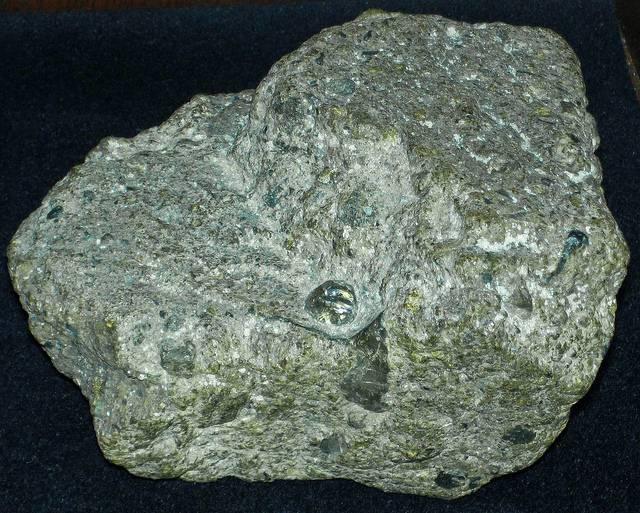
De Beers is known for creating the American engagement ring tradition in the 1930s, linking the words “forever” and “diamond,” and what some call nefarious and monopolistic practices that for decades had a stranglehold on the global diamond trade.
But now the company, of which the extractive industries giant Anglo American has owned an 85 percent stake since 2011, wants to be known for transforming the mining sector in a different way.
Last week, De Beers announced a research project that it says could make some of its diamond mines carbon-neutral in as quickly as five years.
The trick for De Beers is to find a way to turn its diamond mines in Botswana, Canada, Namibia and South Africa into sequestration sites similar in concept to carbon capture and storage (CCS) facilities. The difference is this clean technology adaptation would not just sequester emissions into mine shafts or dig deep into the Earth’s crust at what were once open pit mining operations. Instead, the company plans to incorporate a process called “mineral carbonation.”
Key to De Beers’ hopes for mineral carbonation is kimberlite, a relatively rare igneous rock. Since the 19th century, the presence of kimberlite signaled to miners and prospectors that diamonds were readily available. The porous kimberlite is left behind once the diamonds encased in the rock are extracted. But those “tailings,” the mining industry term for materials that remain after precious metals or minerals are removed from ore, may just unlock the secret to make this sector far less carbon-intensive.
Ideas for mineral carbonation are hardly new. The United Nations Intergovernmental Panel on Climate Chance (IPCC) suggested that silica, a compound that is abundant in many materials from sand to quartz deposits, could react to carbon dioxide and create a storage solution. But that study, completed several years ago, also concluded that such a process was far too energy-intensive to scale. A similar study in the journal Nature Geoscience found a similar potential in geologic formations rich in basal or magnesium-rich mantle rocks; but researchers said these sites would fill up too fast, preventing such mineral carbonation from scaling and providing an effective sequestration option.
De Beers acknowledged that much of this research is new and untested. But the company insisted that accessing just a small amount of the kimberlite tailings at some of its operations could greatly reduce the carbon footprint at several of its mines. And in a press release, the company hinted that it is open to licensing this technology if it proves to be successful, as kimberlite is also found in abundance at sites where metals such as nickel and platinum are extracted.
The company is confident that its testing could be applied to larger of bodies of rock around the world, the project lead for this research, Dr. Evelyn Mervine, told Bloomberg last week. She said the project, which is scheduled to end next year, even has potential to allow some mines to sequester and offset more carbon emissions than they generate.
De Beers has no shortage of this waste kimberlite; the company is evaluating whether carbon gases within a fluid could be injected into the rock, or whether waste rock could simply be spread thinly in order for it to extract carbon from the atmosphere. So far two mines, in Canada and South Africa, have been the subject of De Beers’ mineral carbonation research.
Anglo American, De Beers' parent company, acknowledges that manmade climate change is a risk and says it has a plan to reduce its overall emissions while supporting the world’s effort to make climate action a priority. The company claims to have put such a plan in place in 2011 to both monitor its total carbon emissions more accurately and identify areas where it could reduce energy consumption as well as emissions.
But tackling those emissions has been a challenge for Anglo American thus far. In its most recent sustainability report, the company revealed that it emitted 18 million metric tons of greenhouse gases in 2015 – an increase of a million metric tons over the previous year. If De Beers’ research is successful and can scale, Anglo American could find a way to put actual numbers behind its pledges to mitigate its carbon footprint. So far, the most effective emissions-reduction strategy the company employed involves the divestment of some of its businesses.
Image credit: James St. John/Flickr

Leon Kaye has written for 3p since 2010 and become executive editor in 2018. His previous work includes writing for the Guardian as well as other online and print publications. In addition, he's worked in sales executive roles within technology and financial research companies, as well as for a public relations firm, for which he consulted with one of the globe’s leading sustainability initiatives. Currently living in Central California, he’s traveled to 70-plus countries and has lived and worked in South Korea, the United Arab Emirates and Uruguay.
Leon’s an alum of Fresno State, the University of Maryland, Baltimore County and the University of Southern California's Marshall Business School. He enjoys traveling abroad as well as exploring California’s Central Coast and the Sierra Nevadas.














